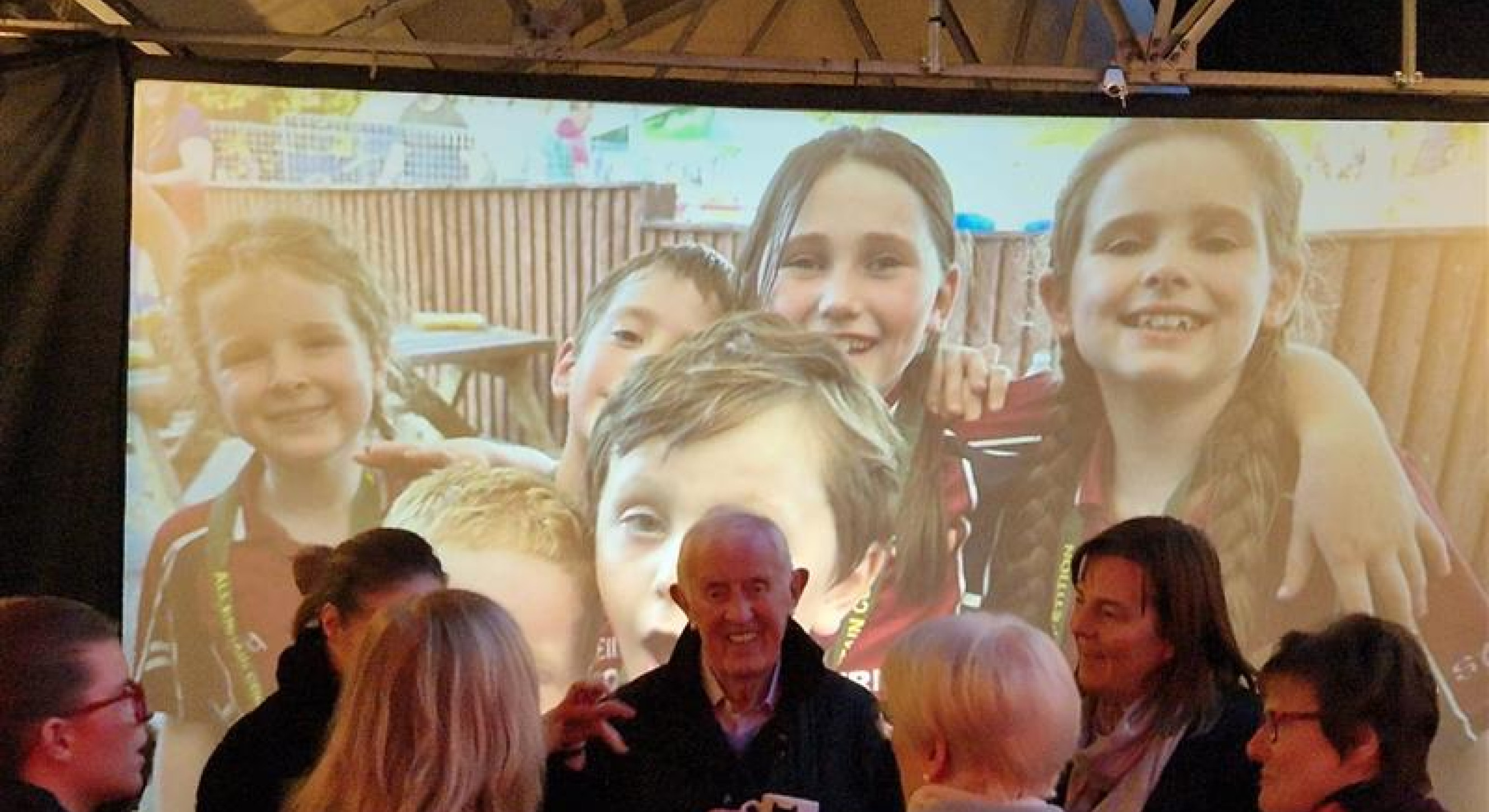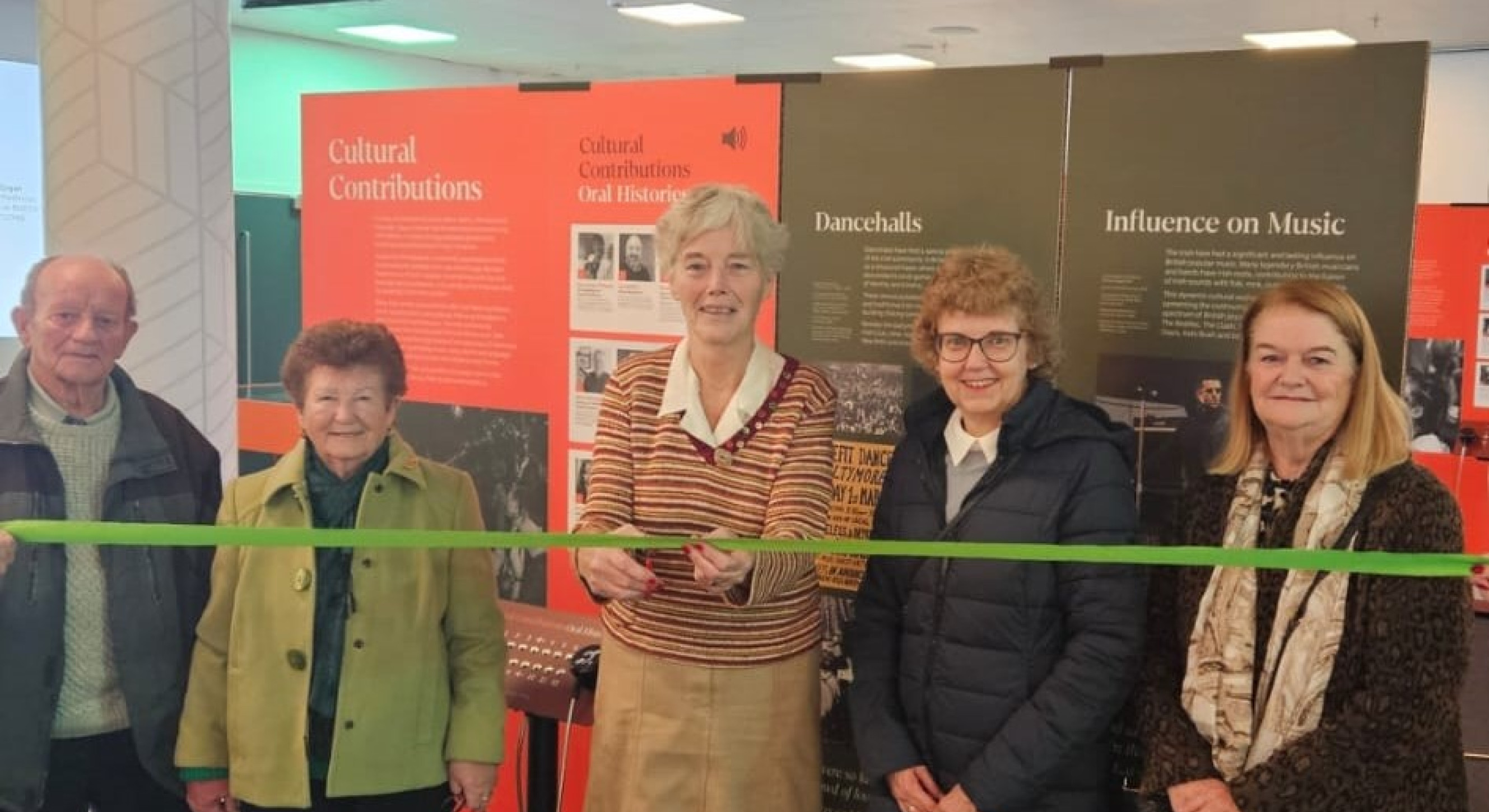The exhibition, the largest ever oral history project to document the lives of the Irish community in Britain, proved so popular that it will now be extended. Irish in Britain has announced that, in partnership with the London Irish Centre, the exhibition will open in the new year at the Centre in Camden, from 5 - 14 January, details here.
Brian Dalton, Irish in Britain’s CEO said: “We are delighted to partner with the London Irish Centre for this additional tour date after the amazing response from the public to our heritage showcase.
"This project celebrates the contribution of Irish people to modern Britain at an important time for migrant communities here and in Ireland.
"We welcome the responsibility to tell these stories with sensitivity and pride and hope they inspire others to be visible in the narrative of a diverse Britain today.”

The exhibition is part of a heritage project created by Irish in Britain, to celebrate its 50th anniversary. It was made possible with support from the National Lottery Heritage Fund, sponsors and donors.
Irish in Britain trained volunteer oral historians from the Irish community in heritage skills, and they alongside the heritage team collected over 130 testimonies from across England, Scotland and Wales.
Poignant
Attracting large crowds in London, Liverpool and Leeds the tour exhibited in Birmingham for its final leg, with its launch night there coinciding with anniversary week of the 1974 pub bombings.

On an emotional and poignant evening, Maurice Malone, CEO of Birmingham Irish Association spoke of the grief and trauma of the families, the city and the impact on the Irish community.
The packed event included Julie Hambleton from the Justice 4 the 21 campaign, whose sister Maxine died in the bombings.
The touring exhibition featured clips of the oral history testimonies of 50 of the interviewees. These included Sean Cloherty, who left Lettermore Island off the coast of Galway at the age of 16 to go to England so he could send money home to his mother who was bring up nine children in poverty.

Sean attended the launch of the exhibition in Liverpool, as did his his children and grandchildren. They shared stories of going back to the Island every summer and staying in the family cottage he left, which had no electricity or running water.
Irish Culture
The exhibition also highlights the importance of Irish music and culture. The recent outpouring of grief for both Sineád O’Connor and Shane MacGowan demonstrates this huge cultural influence of the Irish in Britain.
It also shows changing attitudes as the exhibition features footage of an interview with the Pogues about the banning of their song about the Birmingham Six. Many of the interviewees mention the importance of the Pogues to their Irish identity.

The oral histories, images and artefacts exhibited often triggered memories about their own experiences among the Irish who visited.
Sometimes whole families came together and found common themes in the oral histories with stories handed down from parents and grandparents. Second and third generation Irish showed their enthusiasm for finding out more about their Irish heritage.
It was a deeply emotional experience for many, as hundreds of messages in the visitors’ book showed.
“Absolutely loved the exhibition, so very proud to be Irish and of my family”
“Moving and wonderful to acknowledge the contribution the Irish have made.”
“Excellent exhibition! Heartfelt and emotional – second generation, B’ham born but very Irish”
“Wonderful, informative, very thought provoking. Brought back many stories I was told growing up.”

The map installation was covered in messages, visitors were invited to fill in and tie a baggage label on which was written ‘To me, Irishness is…’
One simply said “Grand”, another “Always feeling like I never left each time I return” another “Strength, resilience, kindness, banter, soda bread, Strabane/Donegal, love laughter and struggles”.
memories
People talked of the vital role that remittances (sending money back) made to families back in Ireland, others talked of the discrimination they faced when looking for a home or a job. They recalled tough manual jobs with long hours and low pay. They also remembered the joy and socialising in dance halls, céilís and clubs.
The many stories in the exhibition about why women left Ireland, and how they made their lives in Britain resonated with many visitors who recalled experiences in the NHS, working alongside other Irish nurses and those from the Windrush generation.
Heritage Project Manager Dr Susan Cahill, said the success of the project showed
“the passion and profound desire within our community to tell this ongoing story and a real hunger and drive to capture these memories.”
The exhibition was featured on RTE national news and on local TV and radio during the tour and Irish in Britain also created an online exhibition, for those who couldn’t visit in person, and this has so far had 9,700 unique visitors and 44,800 page views.
All the full oral history recordings will be deposited for at the Archive of the Irish in Britain at London Metropolitan University, where they will be available to access for generations to come.
The oral histories, and the visitors’ reminiscences they evoked, showed the importance of self-organisation within the Irish community for newly arrived migrants making a life in Britain.
Many of the local Irish community organisations they established are embedded in local communities throughout Britain and are still supporting Irish people today.
Book a slot at the exhibition the London Irish Centre, 50-52 Camden Square, London, NW1 9XB
Click here to visit the online exhibition.
Read our report on the opening launch of the exhibition tour here























